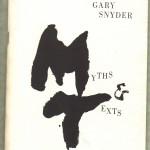Too late we get around to noting the passing of Clive Barnes, the urbane, entertaining and zestful dance and theater critic who died Nov. 19, at age 81, from liver cancer.
 Barnes, who arrived from England to become dance critic at the New York Times in 1965 (he added theater to his duties two years later) was truly a working critic: He was still filing reviews to the New York Post two weeks before he died.
Barnes, who arrived from England to become dance critic at the New York Times in 1965 (he added theater to his duties two years later) was truly a working critic: He was still filing reviews to the New York Post two weeks before he died.
A friend in New York who knows I rarely see the Post passes along this warm and truly lovely tribute from his friend and Post colleague Michael Riedel; may we all deserve such a sendoff when our own time comes. Deborah Jowitt’s memory of Barnes in the Village Voice is worth reading, too.
Riedel says Barnes was deeply influenced in his early days by the mercurial and brilliant British critic Kenneth Tynan, and that explains a lot: the passion, the omnivorian taste, the wordplay, the ability to follow his own opinions wherever they might lead him, the sense of fun. It was Barnes who, in a review for the Times of a production of “As You Like It” whose cast included Meat Loaf, famously referred to the rock star on second reference as “Mr. Loaf.”
For nine years, as lead critic in both dance and theater for the Times, Barnes held the country’s most powerful critic’s chair in two disciplines. In 1977, when the Times ordered him to choose one or the other, he instead bolted from the Pillar to the Post, accepting the tabloid’s offer to let him keep writing about both. And there he stayed, no longer in the Times spotlight but free to do what he wanted.
I met Barnes only once, and so briefly that it hardly counts. It was a dance concert in New York, on a night when the New York critics were out in force, a coalescence that can have deadly effect. At intermission the mass of critics rushed to the lobby and began lobbying one another, feeling each other out for their opinions, trying out lines on each other for possible use in their reviews later that night. Barnes stood, not aloof, but apart from the crowd, infinitely genial, greeting when greeted, but not taking part in the tribal ritual. He was, as Riedel notes, “ever a gentleman”: pleased, briefly and apparently genuinely, to meet a writer from the hinterlands. Professionally, the show was inside his mind. You got the feeling that he simply didn’t care what anyone else thought. He would end up writing what he thought (as it turned out he liked the program, while recognizing it was no barn-burner) and that was that.
And isn’t that the way it ought to be?









